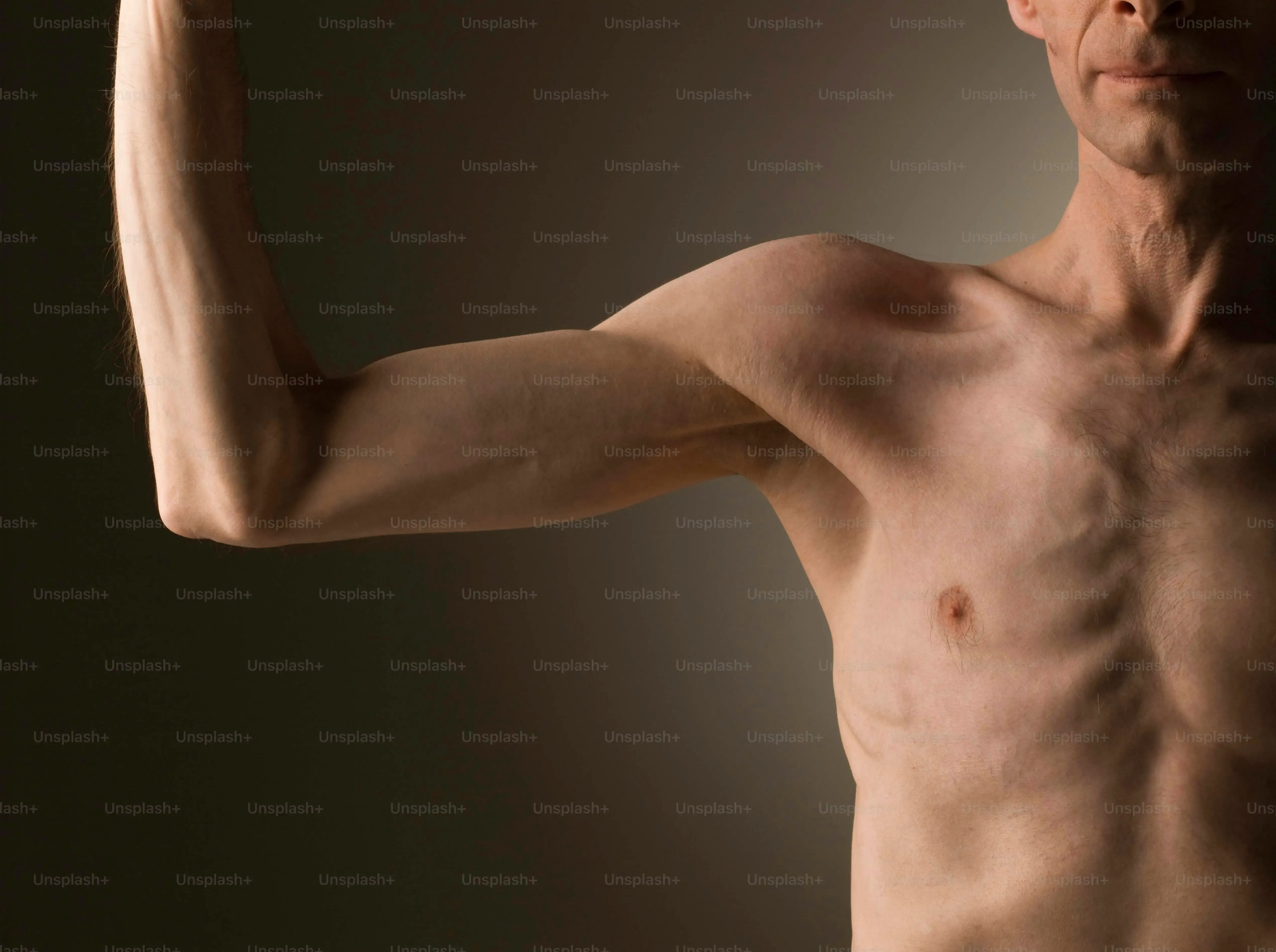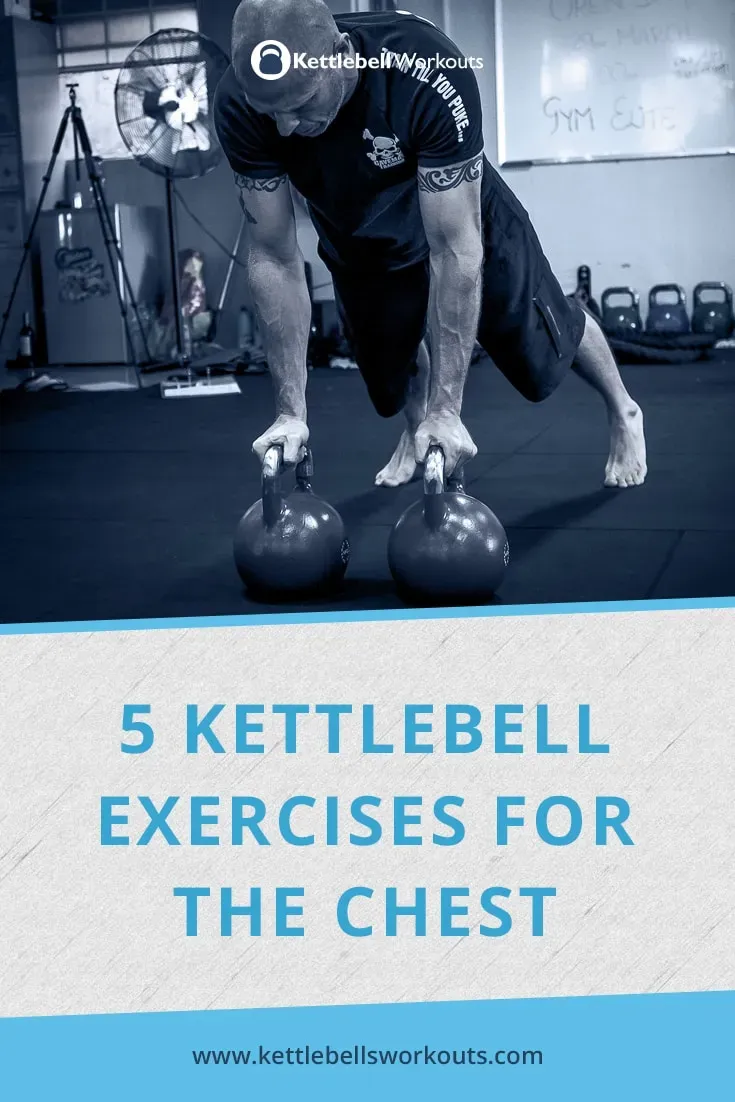Table of Contents
Let's be honest, when you think about hitting your chest and triceps, barbells and dumbbells probably come to mind first. Kettlebells? Maybe not so much for these specific muscles. But dismissing them means missing out on some seriously effective ways to build strength and size in your upper body. A well-structured kettlebell chest and tricep workout offers unique advantages, challenging your muscles differently than flat benches and cable machines ever could. You’ll engage more stabilizing muscles, improve grip strength, and add a dynamic element to your training. This article cuts through the noise to give you a straightforward, effective plan. We’re not just throwing random exercises at you. We'll walk you through a proper warm-up to get your joints ready, then dive into a two-circuit kettlebell chest and tricep workout designed to push you. You’ll find clear instructions for each move, details on reps and sets, and even ideas for scaling the difficulty up or down. Stick with this guide, put in the work, and you might just find that your kettlebell chest and tricep workout becomes a new favorite.
Why Use Kettlebells for Chest and Triceps?

Why Use Kettlebells for Chest and Triceps?
Look, I get it. When you picture a serious chest and triceps workout, you probably see barbells loaded with plates or rows of gleaming dumbbells. Kettlebells? They seem more for swings and snatches, right? That's where you're missing out. Using kettlebells for pressing and extension movements forces your body to work harder to control the weight. Because the center of mass isn't neatly centered in your hand like a dumbbell, your stabilizing muscles, including those in your shoulders and core, fire up like crazy just to keep the bell from wobbling all over the place. This instability isn't a bug; it's a feature, building real-world strength and coordination that translates beyond the gym floor.
Warming Up for Your Kettlebell Chest and Tricep Session

Warming Up for Your Kettlebell Chest and Tricep Session
Why Bother Warming Up Anyway?
so you're hyped to jump into that kettlebell chest and tricep workout. I get it. The bells are waiting, the energy is high. But skipping the warm-up? That's like trying to drive a cold engine at top speed. It's a bad idea. Your muscles and joints need a little heads-up before you start demanding heavy pressing and extensions. A proper warm-up increases blood flow, improves joint mobility, and basically tells your nervous system, "Hey, we're about to do some work here, wake up!" Especially with kettlebells, where control and stability are key, getting everything primed is non-negotiable if you want to lift effectively and, more importantly, avoid tweaking something.
Getting Things Moving: Dynamic Warm-up Drills
We're not talking about static stretching here. That comes later. Right now, we need dynamic movements that mimic the actions you'll be doing. Think about getting blood into the shoulders, chest, and elbows. Arm circles, light band pull-aparts, and thoracic rotations are your friends. These gentle movements help lubricate your joints and activate the smaller muscles that support your bigger movers.
Here are a few dynamic moves to include:
- Arm Circles (forward and backward, gradually increasing size)
- Band Pull-Aparts (focus on squeezing shoulder blades)
- Thoracic Rotations (seated or standing, rotating your upper back)
- Wrist Circles (both directions)
Specific Prep for Your Kettlebell Chest and Tricep Workout
Beyond general movement, let's get specific. Since we'll be pressing and extending, focus on shoulder and elbow mobility. Light kettlebell halos are excellent for shoulder health and getting the upper back involved. You can also do some light, controlled kettlebell presses or push-ups on your knees to simply feel the movement pattern before adding significant load. Don't rush this part; it's setting the stage for everything that follows.
As legendary strength coach Dan John often says, "The warm-up is not the workout." Keep it light, keep it controlled, and focus on feeling your muscles activate.
Circuit One: Building Strength with Kettlebell Chest and Tricep Moves

Circuit One: Building Strength with Kettlebell Chest and Tricep Moves
Setting the Stage: Your First Kettlebell Gauntlet
Alright, warm-up done. Joints feel good, muscles are prepped. Now we get into the meat and potatoes of this kettlebell chest and tricep workout. Circuit One is designed to hit those pressing muscles hard, but with the unique challenge kettlebells bring. Forget lying flat on a bench; we're working with gravity and instability here, forcing your body to stabilize while you move weight. This isn't about ego lifting; it's about controlled strength and building resilience. You'll move between two exercises with minimal rest, keeping the intensity up and forcing those chest and triceps to adapt under fatigue. Pay attention to form; the wobbly nature of the kettlebell will expose any weaknesses quickly.
The First Beast: Push Up to Dip
This move is a killer combo for your chest, shoulders, and triceps, plus it demands serious core control. You'll need two kettlebells placed shoulder-width apart, handles facing forward. Get into a push-up position with your hands gripping the handles. Lower yourself down under control, chest nearing the space between the bells. Push back up powerfully. At the top, shift your weight slightly and perform a dip between the bells, lowering your body until your shoulders are below your elbows, then pressing back up. That's one rep. It's tougher than it sounds because the bells aren't fixed. Don't let them wobble or tip. If the full dip is too much, stick to just the push-up portion on the bells, focusing on a deep range of motion.
Push Up to Dip Breakdown:
- Start with two kettlebells, handles gripping.
- Assume a push-up position over the bells.
- Perform a controlled push-up.
- At the top, execute a dip between the bells.
- Press back up from the dip.
- Repeat for reps.
Shoulder Saver and Upper Back Builder: Halos
You might wonder what kettlebell halos are doing in a kettlebell chest and tricep workout. Simple: shoulder health and upper back engagement. Holding a kettlebell upside down by the horns, circle it slowly and deliberately around your head, keeping it close and moving from front to back, then reverse direction. Your core needs to stay locked down to prevent your torso from swaying. This isn't a speed drill. Think controlled mobility and stability. It primes your shoulders for the pressing ahead and helps counter some of the internal rotation that pressing often encourages. It's a crucial piece of the puzzle for keeping your shoulders happy and healthy.
Circuit Two: Advanced Kettlebell Chest and Tricep Challenges

Circuit Two: Advanced Kettlebell Chest and Tricep Challenges
you survived Circuit One. Felt the burn? Good. Now, let's crank it up. Circuit Two is where we separate the casual lifters from those serious about building a robust upper body with their kettlebells. This isn't just about moving weight; it's about control under fatigue, dynamic stability, and pushing your limits safely. This part of your kettlebell chest and tricep workout adds new challenges that target those pressing muscles from different angles while demanding even more from your core and shoulders. If Circuit One was the warm-up act, Circuit Two is the headliner, designed to leave your chest and triceps thoroughly worked and your stability muscles screaming (in a good way, mostly).
Cooling Down After Your Kettlebell Chest and Tricep Workout

Cooling Down After Your Kettlebell Chest and Tricep Workout
Why You Can't Just Drop and Go
you just finished that brutal kettlebell chest and tricep workout. Sweat's dripping, muscles are buzzing, and the couch is calling your name. I get the urge to just walk away. But skipping the cool-down is like ending a great meal without dessert – it just feels incomplete and frankly, it's not smart. Your body just went through some serious work, contracting and fatiguing those pressing muscles. A proper cool-down helps signal to your nervous system that it's time to wind down, promotes blood flow to aid in recovery, and can help prevent that "I can barely lift my arms" stiffness the next day. Think of it as easing your body back to reality, not just slamming on the brakes. It gives you a chance to check in, breathe, and appreciate the work you just did.
Ignoring this phase isn't just about feeling tight later. It's about long-term mobility and preventing imbalances. Those kettlebell presses and extensions tightened things up; now it's time to gently lengthen them back out.
Why the Cool-Down Matters:
- Signals recovery to the body.
- Helps clear metabolic waste.
- Reduces post-workout muscle soreness (DOMS).
- Improves or maintains flexibility and range of motion.
- Provides a mental transition out of "workout mode."
Specific Stretches and Mobility for Chest and Triceps
So, what does this look like after a kettlebell chest and tricep workout? We're talking static stretching now – holding stretches for a period, usually 20-30 seconds. Focus on the muscles you just hammered. A simple doorframe stretch for the chest is gold. Place your forearm on a doorframe, step through gently until you feel a stretch across your chest and the front of your shoulder. For triceps, the classic overhead triceps stretch works well: reach one arm overhead, bend the elbow, and gently pull it down with your other hand, feeling the stretch on the back of your upper arm. Don't bounce; just find a comfortable stretch and hold it.
Consider adding some light foam rolling to your upper back and lats as well. Tightness there can impact shoulder mechanics during pressing. A minute or two on each side can make a difference. The goal here isn't pain; it's release and relaxation. Breathe into the stretches and feel the tension dissipate.
Finishing Strong with Your Kettlebell Chest and Triceps
So there you have it. Ditching the traditional bench press for a session or two won't crater your chest and triceps development. In fact, incorporating a dedicated kettlebell chest and tricep workout can uncover weaknesses you didn't know you had and build a different kind of strength – one that involves more than just pushing straight up. The awkwardness, the off-center weight, the sheer demand on your stabilizers – it's all part of the package. Give this routine a genuine shot. You might just discover that those oddly shaped weights are exactly what your upper body needed to finally start paying attention.